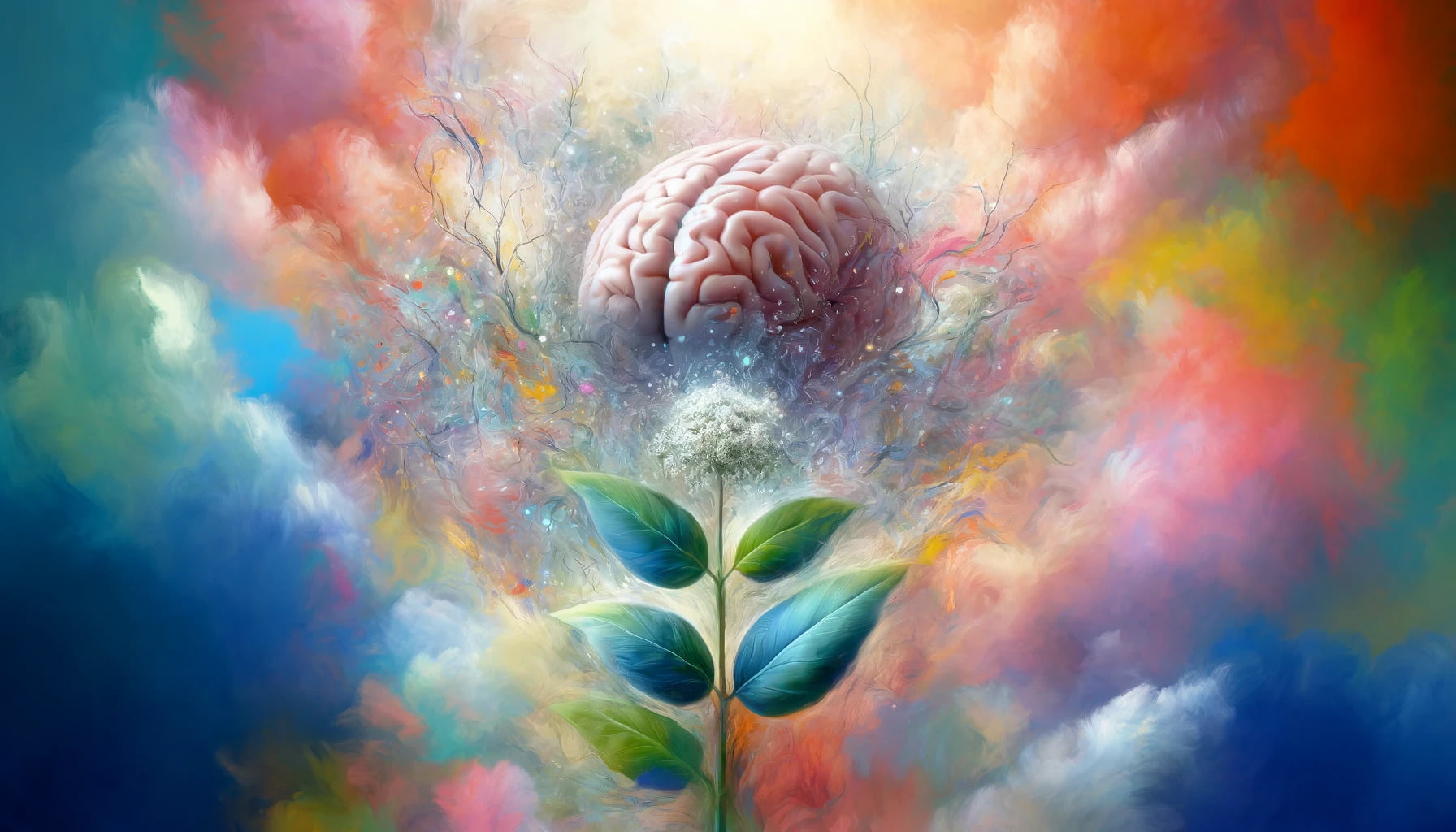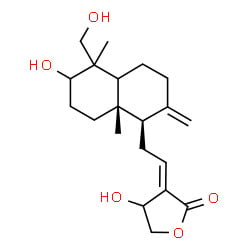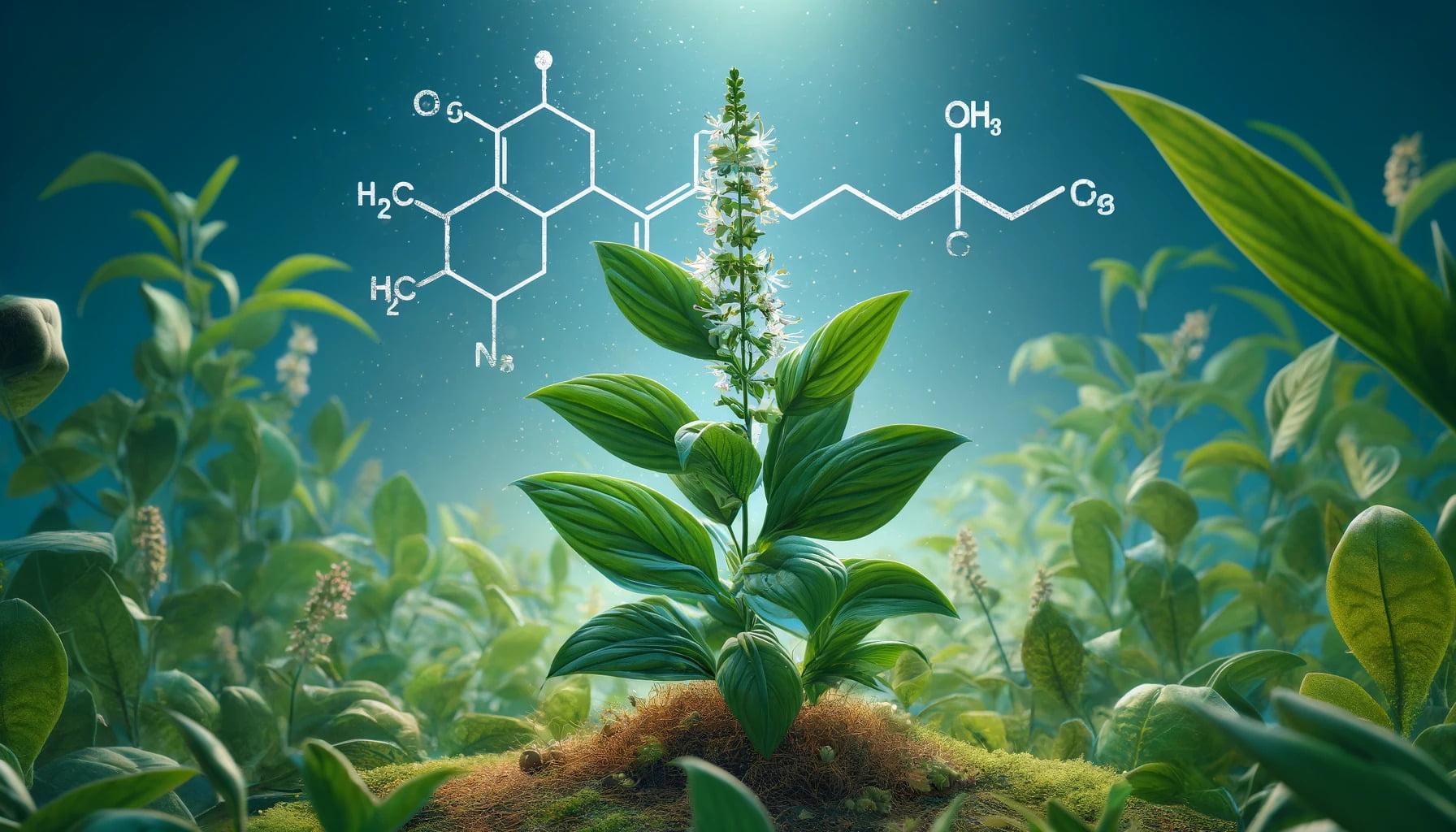
Boosting brain power has never been easier than it is today!
With this in mind, research suggests Andrographis paniculata and its key active compound (andrographolide) have the potential to provide cognitive and neuroprotective benefits.
In this article, we aim to equip you with everything you need to know about adding this nootropic compound to your daily healthcare regimen.
Table of Contents
What is Andrographis Paniculata?

Andrographis paniculata, commonly known as Kalmegh, King of Bitters, Creat, Green Chiretta, Kirayat, or Kalmegh Gada, is a medicinal herb belonging to the Acanthaceae family.(1)
Native to tropical and subtropical regions, particularly India and Southeast Asia, this plant has been used for centuries in traditional medicine systems such as Ayurveda, Traditional Chinese Medicine, Unani, and Thai traditional medicine.
Andrographis paniculata is a branched herb with a reddish-green stem and lanceolate leaves measuring 2-12 cm long and 1-3 cm wide.
The plant produces small white flowers and capsule fruits.
As one of its common names, “King of Bitters,” suggests, Andrographis paniculata is known for its intensely bitter taste.
This bitterness is attributed to the presence of active compounds.
What Are The Active Compounds Found in Andrographis Paniculata?
The primary active compounds found in Andrographis paniculata include:
- Andrographolide
- Neoandrographolide
- Deoxyandrographolide
These compounds, particularly andrographolide, are responsible for the herb’s bitter taste and its various medicinal properties.
The andrographolide content in Andrographis paniculata typically ranges from 2-6%.

What Are The Potential Cognitive and Neurological Benefits of Andrographis Paniculata?
Andrographis paniculata has been studied for its potential cognitive and neurological benefits, which may include:
- Enhancing memory and learning
- Improving focus and concentration
- Reducing brain fog and mental fatigue
- Protecting against neurodegenerative diseases like Alzheimer’s and Parkinson’s
- Alleviating anxiety and depression
- Improving sleep quality
These benefits are attributed to the herb’s active compounds, particularly andrographolide, which has been shown to exhibit neuroprotective, anti-inflammatory, and adaptogenic properties.(2)
How Does Andrographis Paniculata Enhance Memory and Learning?
Andrographis paniculata may enhance memory and learning by modulating key neurotransmitters and signaling pathways in the brain.
According to a study on andrographolide, the primary active compound in Andrographis paniculata, improved memory retention and learning in animal models.(3)
The study suggested that these effects were mediated through the herb’s antioxidant and anti-inflammatory properties, as well as its ability to modulate the cholinergic system, which plays a crucial role in memory and learning.
| Mechanism | Effect on Memory and Learning |
|---|---|
| Antioxidant activity | Protects brain cells from oxidative damage, preserving cognitive function. |
| Anti-inflammatory properties | Reduces neuroinflammation, which can impair memory and learning. |
| Cholinergic system modulation | Enhances the function of acetylcholine, a neurotransmitter involved in memory and learning. |
How Does Andrographis Paniculata Improve Focus and Concentration?
Andrographis paniculata may improve focus and concentration by reducing mental fatigue and promoting alertness.
A study by found that Andrographis paniculata extract can improve attention and concentration in animal models.(4)
The researchers suggested that the herb’s adaptogenic properties, which help the body cope with stress, may contribute to its ability to enhance cognitive performance.
How Does Andrographis Paniculata Reduce Brain Fog and Mental Fatigue?
Andrographis paniculata may reduce brain fog and mental fatigue by combating oxidative stress and inflammation in the brain.
Brain fog and mental fatigue are often associated with increased levels of reactive oxygen species (ROS) and inflammatory cytokines, which can impair cognitive function.
The antioxidant and anti-inflammatory properties of andrographolide may help counteract these effects, leading to improved mental clarity and reduced fatigue.
How Does Andrographis Paniculata Protect Against Neurodegenerative Diseases?
Andrographis paniculata may protect against neurodegenerative diseases like Alzheimer’s and Parkinson’s by mitigating the underlying pathological processes.
These diseases are characterized by the accumulation of misfolded proteins, oxidative stress, inflammation, and neuronal loss.
The neuroprotective properties of andrographolide, as shown in a study from 2019, may help combat these pathological mechanisms.(5)
| Neurodegenerative Disease | Protective Mechanisms of Andrographis Paniculata |
|---|---|
| Alzheimer’s disease | Reduces amyloid-beta aggregation and tau hyper-phosphorylation, two hallmarks of Alzheimer’s pathology. |
| Parkinson’s disease | Protects dopaminergic neurons from oxidative stress, acting on the NF-κB signaling pathway and reducing neuro-inflammation. |
How Does Andrographis Paniculata Alleviate Anxiety and Depression?
Andrographis paniculata may help alleviate anxiety and depression by modulating neurotransmitter systems and reducing neuroinflammation.
A study in 2019 found that Andrographis paniculata extract exhibited anxiolytic and antidepressant-like effects in animal models.(6)
How Does Andrographis Paniculata Improve Sleep Quality?
Andrographis paniculata may improve sleep quality by reducing stress and promoting relaxation.
Sleep disturbances are often associated with increased levels of stress and anxiety.
The adaptogenic properties of Andrographis paniculata, as demonstrated by a study from 2014, may help the body cope with stress and promote a sense of calm, potentially leading to improved sleep quality.(7)
What Are The Potential Side Effects of Andrographis Paniculata?
While Andrographis paniculata is generally considered safe when taken in recommended doses, some potential side effects may include:
- Digestive discomfort (e.g., nausea, diarrhea)
- Allergic reactions (rare)
- Bitter taste
- Headache
- Fatigue

What Are The Potential Drug Interactions With Andrographis Paniculata?
Andrographis paniculata may interact with certain medications, including:
- Blood thinners (e.g., warfarin)
- Diabetes medications
- Immunosuppressants
- Antihypertensive drugs
These interactions can alter the effectiveness of the medications or increase the risk of side effects.
Who Should Avoid or Use Caution with Andrographis Paniculata?
Certain individuals should avoid or use caution when considering Andrographis paniculata, including:
- Pregnant or breastfeeding women
- Children
- People with autoimmune disorders
- Individuals with known allergies to plants in the Acanthaceae family
- Those scheduled for surgery (due to potential blood-thinning effects)
Always inform your healthcare provider about any herbs or supplements you are taking to avoid potential drug interactions and severe side effects.
What Are The Dosage and Administration Guidelines for Andrographis Paniculata?
The recommended dosage of Andrographis paniculata may vary depending on the specific product and the individual’s age, health status, and other factors.
However, general guidelines suggest:
- Adult dosage: 400-1,200 mg per day, divided into two or three doses
- Standardized extracts: Look for products containing 10-30 mg of andrographolide per dose
What Are The Different Forms of Andrographis Paniculata Supplements?
Andrographis paniculata supplements are available in various forms, including:
- Capsules
- Tablets
- Tinctures
- Powders
- Teas
When choosing a supplement, opt for a reputable brand that follows good manufacturing practices (GMP) and provides third-party testing results to ensure purity and potency.
- Okhuarobo, Agbonlahor et al. “Harnessing the medicinal properties of Andrographis paniculata for diseases and beyond: a review of its phytochemistry and pharmacology.” Asian Pacific Journal of Tropical Disease vol. 4,3 (2014): 213–222. doi:10.1016/S2222-1808(14)60509-0↩
- Sani, Dahiru et al. “A standardised Andrographis paniculata Burm. Nees aqueous extract prevents Lipopolysaccharide-induced cognitive deficits through suppression of inflammatory cytokines and oxidative stress mediators.” Journal of advanced research vol. 16 87-97. 30 Nov. 2018, doi:10.1016/j.jare.2018.11.005↩
- Songvut, Phanit et al. “Enhancing oral bioavailability of andrographolide using solubilizing agents and bioenhancer: comparative pharmacokinetics of Andrographis paniculata formulations in beagle dogs.” Pharmaceutical biology vol. 62,1 (2024): 183-194. doi:10.1080/13880209.2024.2311201↩
- Radhika, P et al. “Immunostimulant, cerebroprotective & nootropic activities of Andrographis paniculata leaves extract in normal & type 2 diabetic rats.” The Indian journal of medical research vol. 135,5 (2012): 636-41.↩
- Lu, Jiashu et al. “A review for the neuroprotective effects of andrographolide in the central nervous system.” Biomedicine & pharmacotherapy = Biomedecine & pharmacotherapie vol. 117 (2019): 109078. doi:10.1016/j.biopha.2019.109078↩
- Zhang, Jing-Jing et al. “Andrographolide Exerts Significant Antidepressant-Like Effects Involving the Hippocampal BDNF System in Mice.” The international journal of neuropsychopharmacology vol. 22,9 (2019): 585-600. doi:10.1093/ijnp/pyz032↩
- Thakur, Ajit Kumar et al. “Adaptogenic potential of andrographolide: An active principle of the king of bitters (Andrographis paniculata).” Journal of traditional and complementary medicine vol. 5,1 42-50. 19 Dec. 2014, doi:10.1016/j.jtcme.2014.10.002↩
